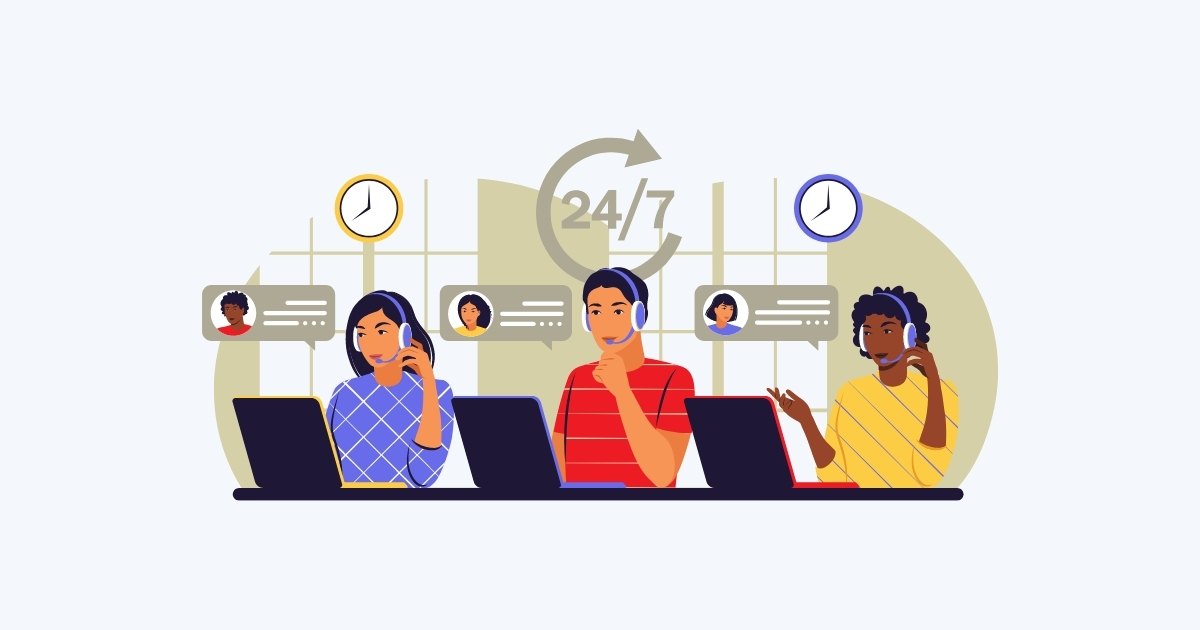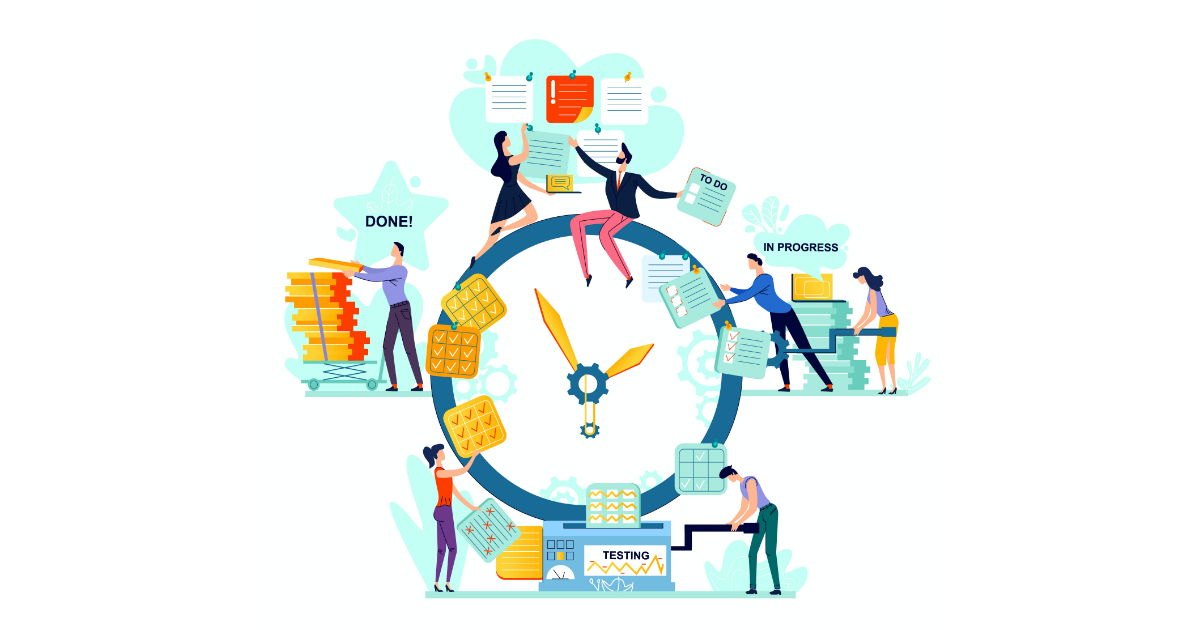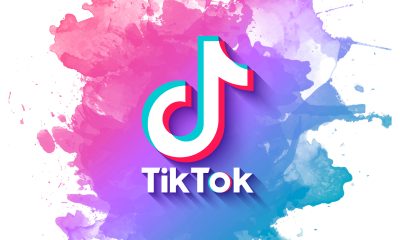Technology Explained
How Social Media Is Changing the News Industry

In the digital age, the news industry is undergoing a seismic shift, largely driven by the rise of social media. Platforms like Facebook, Twitter, Instagram, and TikTok have not only changed how news is consumed but also how it is produced and disseminated. This article delves into the multifaceted impact of social media on the news industry, exploring both the opportunities and challenges it presents.
Democratization of News
One of the most significant impacts of social media on the news industry is the democratization of news. Traditional news outlets like newspapers, television, and radio were once the gatekeepers of information. Today, social media platforms have leveled the playing field, allowing anyone with internet access to share news and information. This democratization has led to a more diverse array of voices and perspectives, making the news landscape more inclusive.
Citizen Journalism
The rise of citizen journalism is a direct consequence of social media’s influence. Ordinary people can now report on events as they happen, often providing real-time updates and firsthand accounts that traditional media outlets may not have immediate access to. This has been particularly evident during crises and significant events, such as natural disasters, protests, and political upheavals. Citizen journalists can sometimes offer a raw, unfiltered view of events, adding a layer of authenticity to news reporting.
Speed and Accessibility
Social media has dramatically increased the speed at which news is disseminated. Breaking news can spread like wildfire, reaching millions of people within minutes. This immediacy is a double-edged sword. On one hand, it allows people to stay informed about current events almost instantaneously. On the other hand, the rush to share information quickly can sometimes lead to the spread of misinformation.
Real-Time Updates
Platforms like Twitter have become go-to sources for real-time updates. News organizations and journalists use these platforms to provide live coverage of events, offering minute-by-minute updates that keep the public informed. This has changed the expectations of news consumers, who now demand instant access to information.
Accessibility
Social media has also made news more accessible to a global audience. People from different parts of the world can access news from various sources, breaking down geographical barriers. This global accessibility has fostered a more interconnected world, where people are more aware of international events and issues.
Challenges and Ethical Concerns
While social media has brought numerous benefits to the news industry, it also presents several challenges and ethical concerns. The rapid dissemination of information can sometimes lead to the spread of fake news and misinformation. The lack of editorial oversight on social media platforms means that false information can spread unchecked, potentially causing harm.
Misinformation and Fake News
The spread of misinformation is one of the most pressing issues facing the news industry today. Social media platforms are rife with false information, ranging from harmless rumors to dangerous conspiracy theories. The challenge for news organizations is to debunk misinformation while maintaining credibility. This has led to an increased focus on fact-checking and the development of tools and algorithms to identify and flag false information.
Echo Chambers
Another concern is the creation of echo chambers, where people are exposed only to information that aligns with their existing beliefs. Social media algorithms often prioritize content that users are likely to engage with, which can lead to the reinforcement of existing biases and the polarization of public opinion. This has significant implications for the news industry, as it becomes more challenging to present balanced and unbiased reporting.
The Role of Algorithms
Algorithms play a crucial role in determining what news content users see on social media. These algorithms are designed to maximize engagement, often prioritizing sensational or emotionally charged content. While this can increase user engagement, it can also skew the news landscape, making it more difficult for important but less sensational stories to gain traction.
Personalization
On the positive side, algorithms allow for personalized news feeds, tailoring content to individual preferences and interests. This can enhance the user experience by providing relevant and engaging content. However, the downside is that it can contribute to the aforementioned echo chambers, limiting exposure to diverse viewpoints.
The Business Model
The traditional business model of the news industry has been upended by social media. Advertising revenue, once the lifeblood of newspapers and television networks, has shifted to social media platforms. This has forced news organizations to adapt, exploring new revenue streams such as subscriptions, memberships, and sponsored content.
Monetization Strategies
Many news organizations have turned to paywalls and subscription models to generate revenue. While this can provide a steady income stream, it also limits access to information, potentially widening the gap between those who can afford to pay for news and those who cannot. Sponsored content and native advertising have also become more prevalent, blurring the lines between editorial content and advertising.
Collaboration and Partnerships
In response to these challenges, some news organizations are forming partnerships with social media platforms. These collaborations can provide financial support and increased visibility, but they also raise questions about editorial independence and the influence of tech companies on the news industry.
The Future of News
As social media continues to evolve, so too will its impact on the news industry. Emerging technologies such as artificial intelligence and augmented reality are likely to further transform how news is produced and consumed. AI-powered news bots, for example, can generate news articles and provide real-time updates, while augmented reality can offer immersive news experiences.
Adaptation and Innovation
The key to navigating this ever-changing landscape is adaptation and innovation. News organizations must be agile, embracing new technologies and exploring innovative ways to engage with audiences. This may involve experimenting with new formats, such as podcasts, video content, and interactive storytelling.
Trust and Credibility
In an era of misinformation and fake news, trust and credibility are more important than ever. News organizations must prioritize transparency, accuracy, and ethical journalism to maintain the trust of their audiences. This may involve greater collaboration with fact-checking organizations and increased efforts to educate the public about media literacy.
Conclusion
Social media has undoubtedly transformed the news industry, bringing both opportunities and challenges. It has democratized news, increased speed and accessibility, and forced news organizations to rethink their business models. However, it has also given rise to misinformation, echo chambers, and ethical concerns. As the news industry continues to evolve, the key to success will be adaptation, innovation, and a steadfast commitment to trust and credibility. By navigating these complexities, the news industry can harness the power of social media to inform, engage, and empower audiences around the world.
Technology
NVIDIA GeForce GTX 1060 Mobile: Portable Gaming
Technology Explained
AI Testing Tools: Transforming Modern Software Testing

Introduction
Software Testing has evolved over the years from its traditional methods of Manual Testing and Automated Testing based on rules to AI-assisted testing tools. As applications increase in complexity and release cycles are shorter, many teams have turned to AI-based testing tools for increased quality, speed, and efficiency of their software.
Many testing tools use Machine Learning (ML), Data Analytics, and Intelligent Algorithms to automate test creation, optimize the execution of tests, and detect defects automatically and accurately so that engineers can deliver high-quality software with less manual effort.
What Are AI Testing Tools?
AI testing tools are software-based solutions that apply artificial intelligence and machine learning to various points in the software testing process. Artificial intelligence testing tools learn from experience by analysing the way a program operates, how it interacts with the user, the way it stores and retrieves data, and many more factors.
An AI testing tools will continue to learn and improve its testing decision-making capability over time based on the testing results it has recorded from previous applications. AI testing tools can be used in conjunction with traditional automation tools, as they offer a number of advantages over traditional testing tools when testing more complex applications, such as: Web Applications; Mobile Apps; Application Program Interfaces (APIs); and Microservices”.
AI testing tools are software solutions that use artificial intelligence, machine learning, and data analytics to improve the testing process. Unlike traditional testing methods, which rely heavily on human intervention, AI testing tools can learn from past test results and predict areas that may require attention. These tools can:
- Automatically Generate Test Cases: AI algorithms analyze application behavior and create test scenarios.
- Detect Bugs Early: AI identifies patterns and anomalies that humans might miss.
- Optimize Test Coverage: AI ensures that all critical areas of the application are tested efficiently.
- Reduce Manual Effort: Testers can focus on strategic tasks while AI handles repetitive work.
By integrating AI testing tools, companies can accelerate software release cycles without compromising quality.
Rise of AI Testing Tools: Transforming Modern Software Testing
AI testing tools have grown rapidly in recent years as software development becomes more complex. Traditional testing methods are often slow and require a lot of manual work. AI testing tools use artificial intelligence to analyze code, find bugs, and suggest improvements automatically. This rise in AI tools is changing the way companies test software, making the process faster and more accurate. More businesses are adopting AI testing because it saves time, reduces errors, and helps release software more confidently
Popular AI Testing Tools in the Market
1. Testim
Testim uses AI to automate functional and regression testing. It provides self-healing capabilities, meaning the tool can adjust to minor changes in the UI without breaking test scripts.
2. Applitools
Applitools focuses on visual AI testing, ensuring that the software’s UI looks correct across all devices and screen sizes. It uses machine learning to detect visual differences and layout errors.
3. Mabl
Mabl is a cloud-based AI testing platform that combines automated testing with machine learning. It offers features like auto-healing scripts, predictive analytics, and detailed test reports.
4. Functionize
Functionize uses natural language processing to allow testers to create test cases using plain English. Its AI engine helps detect functional defects and adapt tests automatically.
5. Selenium with AI Integration
While Selenium is a traditional testing tool, AI integrations can enhance it by improving test maintenance, generating intelligent test scripts, and predicting failure points.
How AI Is Used in Software Testing
AI enhances software testing in multiple ways:
1. Intelligent Test Case Generation
AI models analyze application workflows and automatically generate relevant test cases. This reduces human effort and ensures better test coverage, even for edge cases that testers may miss.
2. Self-Healing Test Automation
When UI elements or APIs change, AI-driven tools can automatically update test scripts without manual intervention. This significantly reduces test maintenance costs.
3. Predictive Defect Detection
By studying historical test failures and source code changes, AI tools can predict high-risk areas in an application, allowing teams to focus on critical test scenarios.
4. Smart Test Execution
AI tools optimize test execution by prioritizing important test cases based on impact, risk, and previous failures, helping reduce overall testing time.
Types of AI Testing Tools
AI testing tools can be broadly categorized into the following types:
1. AI-Powered Test Automation Tools
These tools enhance traditional automation by adding intelligence for test creation, maintenance, and execution.
2. AI-Based API Testing Tools
Focused on validating APIs, these tools automatically generate tests from API traffic, detect anomalies, and validate responses accurately.
3. Visual UI Testing Tools
AI compares visual elements across different browsers and devices to identify layout issues that conventional automation often overlooks.
4. Performance and Quality Intelligence Tools
These tools analyze system performance data and detect patterns that indicate potential failures or performance bottlenecks.
Benefits of Using AI Testing Tools
AI testing tools bring many advantages to software development. They can detect errors and issues faster than humans, which reduces the chances of releasing faulty software. These tools also help save time and cost because fewer people are needed for repetitive testing tasks. AI tools can run tests continuously and cover more scenarios, improving overall software quality. Additionally, they can learn from past tests, making future testing smarter and more efficient. Overall, AI testing tools make software development smoother, faster, and more reliable.
Using AI testing tools offers several advantages:
- Faster test execution and feedback cycles
- Reduced manual testing effort
- Improved test accuracy and coverage
- Lower maintenance for test scripts
- Early detection of defects
- Better software quality and reliability
These benefits make AI testing tools highly suitable for Agile and DevOps environments.
Role of AI Testing Tools
The main role of AI testing tools is to support software teams in finding and fixing problems quickly. They can automatically test different parts of an application, predict where errors might occur, and suggest fixes. These tools also help improve test coverage by checking parts of software that might be missed in manual testing. By reducing human effort on repetitive tasks, AI testing tools allow developers and testers to focus on more complex and creative work, improving the overall development process.
Challenges of AI Testing Tools
Despite their benefits, AI testing tools face some challenges. They can be expensive to implement for smaller companies. Some tools also require technical knowledge to set up and use properly. AI may not always understand complex software logic or unexpected user behavior, which can lead to missed errors. Another challenge is the need for high-quality data for the AI to learn effectively. Companies must carefully manage these challenges to make the most of AI testing tools.
Despite their advantages, AI testing tools also come with challenges:
- Initial setup and learning curve
- Dependency on quality data for accurate learning
- Limited transparency in decision-making
- Not a complete replacement for human judgment
AI testing should be used to assist testers, not replace them entirely.
Best Practices for Adopting AI Testing Tools
- Start with small pilot projects
- Combine AI testing with existing automation frameworks
- Continuously train models using real test data
- Maintain human oversight for critical testing decisions
- Evaluate tools based on project requirements
Tips for Implementing AI Testing Tools
- Identify Testing Goals: Understand which testing areas can benefit the most from AI, such as regression or UI testing.
- Choose the Right Tool: Evaluate tools based on features, ease of use, and integration with your existing workflows.
- Train Your Team: Provide proper training so your QA team can leverage AI effectively.
- Monitor AI Performance: Regularly review AI test results to ensure the tool is working accurately.
- Combine AI with Human Testing: While AI is powerful, human judgment is still crucial for usability and exploratory testing.
Future of AI in Software Testing
The future of AI in software testing is highly promising and continues to evolve rapidly as software systems become more complex and delivery timelines become shorter. With advancements in machine learning and data-driven models, AI testing tools are expected to become more autonomous, adaptive, and predictive. These tools will move beyond simple automation and start making intelligent decisions based on application behavior, historical test data, and user interactions.
In the coming years, AI-driven testing solutions will focus on predictive defect detection, allowing teams to identify high-risk areas in code before bugs reach production. Continuous testing will become more efficient as AI optimizes test execution, prioritizes critical test cases, and reduces redundant testing. Self-healing test scripts will further minimize maintenance efforts by adapting automatically to UI or API changes.
AI will also play a vital role in enhancing testing accuracy and coverage across modern architectures such as cloud-native applications, microservices, and APIs. By integrating seamlessly with Agile and DevOps pipelines, AI testing tools will help organizations deliver faster releases without compromising quality. Overall, AI will become a core component of next-generation software testing strategies.
Conclusion
AI testing tools are redefining how teams approach software quality. By automating complex tasks, predicting failures, and optimizing test execution, these tools enable faster and more reliable software releases. While challenges remain, the adoption of AI-driven testing is becoming essential for organizations building modern, scalable applications.
Business industrial
Differentiating Shared Services vs. BPO: What Businesses Need to Know

Introduction
As companies grow, so do their operational demands. Managing finance, HR, IT, customer service, and administrative tasks becomes more complex and costly. To operate more efficiently, organizations often explore support models like Shared Services and Business Process Outsourcing (BPO).
These two models might seem similar, but they serve different purposes—and choosing the right one can significantly impact a company’s costs, productivity, and long-term growth. In this blog, we break down the key differences between shared services vs. BPO, helping your business make the right decision. Companies around the world rely on trusted outsourcing partners like SixEleven BPO to improve efficiency while lowering operational costs.
What Are Shared Services?
A shared services model centralizes internal business functions within the company. Instead of each department or branch handling tasks separately, a dedicated internal team supports the entire organization from one location.
For example, a corporation might establish a Shared Services Center (SSC) for:
- HR administration
- Payroll and timekeeping
- Finance and accounting
- Procurement
- IT support
- Data management
Key Characteristics of Shared Services
- Owned and operated by the company: The business manages the team, processes, and infrastructure.
- Focus on standardization: Shared services optimize workflows across departments to reduce duplication and errors.
- Internal cost-savings model: By centralizing teams, companies reduce operational expenses compared to having separate teams in each department.
- Best for large enterprises: Shared services are ideal for organizations with high-volume, repetitive processes.
Advantages of Shared Services
- More control over operations
- Standardized internal processes
- Better data governance
- Closer alignment with company culture
Limitations of Shared Services
- High setup cost
- Requires large headcount
- Limited scalability
- Still dependent on internal hiring and management
- Not ideal for small and medium enterprises (SMEs)
What Is Business Process Outsourcing (BPO)?

BPO involves hiring an external company to handle specific tasks or entire business functions. Instead of building an internal department, businesses outsource their operations to specialized service providers, often located offshore.
Popular BPO solutions include:
- Customer service & technical support
- Appointment scheduling
- Sales & lead generation
- Data entry & back-office processing
- Finance, accounting & payroll
- Content moderation
- Healthcare support
- IT helpdesk services
Organizations partner with leading outsourcing firms like SixEleven BPO to reduce costs, access trained talent, and ensure 24/7 efficiency.
Key Characteristics of BPO
- Operated by an external provider: The outsourcing company is responsible for hiring, training, and managing the team.
- Flexible and scalable: Businesses can scale up or down quickly depending on demand.
- Cost-efficient: Offshore outsourcing can save companies 60–70% in labor and operational costs.
- Focus on quality and expertise: BPO providers specialize in the tasks they support, offering higher efficiency and performance.
Advantages of BPO
- Lower operational costs
- Access to global talent
- 24/7 support availability
- Fast deployment and team expansion
- No infrastructure or HR burden
- Professional management and better productivity
Limitations of BPO
- Requires communication alignment
- Needs clear documentation and expectations
- Cultural differences (minimal when outsourcing to the Philippines)
Shared Services vs. BPO: Key Differences
1. Ownership and Control
- Shared Services: Operated internally.
- BPO: Outsourced to a third-party provider.
2. Cost Structure
- Shared Services: Lower cost than multiple in-house teams but still expensive to maintain.
- BPO: Highest cost savings—offshore outsourcing reduces expenses by up to 70%.
3. Scalability
- Shared Services: Limited, depends on internal hiring and budget.
- BPO: Highly scalable with fast team expansion.
4. Expertise
- Shared Services: Generalized, company-trained teams.
- BPO: Specialized teams with industry-specific experience.
5. Setup Requirements
- Shared Services: Requires office space, technology, HR, and management.
- BPO: No setup needed provider already has teams, systems, and infrastructure.
6. Best Suited For
- Shared Services: Multinational enterprises with high-volume internal processes.
- BPO: Businesses of all sizes, especially those seeking cost savings and efficiency.
Which Model Is Right for Your Business?
Both models offer strong benefits, but the best choice depends on your business goals, budget, and long-term plans.
Choose Shared Services If:
- You want full internal control
- You’re a large enterprise with extensive internal processes
- Budget is not a major concern
- You want to standardize internal workflows
Choose BPO If:
- You want to drastically reduce costs
- You need fast scalability
- You want to free your internal team from time-consuming tasks
- You need trained professionals instantly
- You require 24/7 support
- You want to focus on core business growth
Why Many Companies Prefer BPO Today
Modern businesses prioritize flexibility, speed, and cost-effectiveness—areas where outsourcing excels. BPO providers like SixEleven BPO deliver trained teams, industry expertise, and customized workflows without the heavy investment required for shared services.
Companies benefit from:
- Lower labor costs
- Ready-to-go trained teams
- Faster delivery times
- Improved customer satisfaction
- Stronger operational performance
For many organizations, outsourcing is not just a cost-saving decision—it is a strategic advantage.
Challenges and Considerations
1. Shared Services Challenges
- High initial investment in infrastructure and staff
- Limited flexibility compared to outsourcing
- Dependence on internal resources for technology and expertise
2. BPO Challenges
- Less direct control over processes
- Potential communication and cultural barriers in offshore BPO
- Risk of data security and compliance issues
- Dependence on service-level agreements for quality assurance
Factors Businesses Should Consider When Choosing Between Shared Services and BPO
- Core vs. Non-Core Activities: Identify which functions are essential to your business strategy. Core functions may benefit more from shared services, while non-core functions may be suitable for BPO.
- Cost vs. Long-Term Investment: Evaluate whether your organization can afford the initial investment for shared services or if immediate cost savings through BPO are more strategic.
- Control Requirements: Determine the level of control your organization needs over processes. Shared services provide more control, while BPO involves reliance on external providers.
- Scalability Needs: If rapid growth or seasonal fluctuations are expected, BPO offers more scalable solutions.
- Expertise and Technology Access: Consider whether your organization has the internal expertise and technology to manage processes efficiently or if an external provider can deliver better results.
- Risk and Compliance: Evaluate operational, legal, and security risks associated with outsourcing versus maintaining an internal shared services model.
Conclusion
Understanding the differences between shared services and BPO is essential for businesses aiming to improve efficiency, reduce costs, and enhance overall operations. Shared services provide centralized, internally managed processes with long-term control and consistency, while BPO offers flexibility, access to specialized expertise, and potential cost savings through external providers. Businesses should assess their core activities, scalability needs, control preferences, and risk tolerance before making a decision. By carefully considering these factors, organizations can select the right model to drive efficiency, support growth, and achieve strategic goals.
Final Thoughts
Shared services and BPO both play important roles in business operations, but they serve different needs. Shared services focus on internal centralization, while BPO offers external expertise, scalability, and significant cost savings.
Companies looking for efficiency, flexibility, and rapid growth often choose outsourcing partners like SixEleven BPO to handle customer service, back-office, sales, and support tasks. With the right outsourcing strategy, businesses can enhance performance, reduce costs, and stay competitive in today’s fast-changing marketplace.
More: Establish your brand effortlessly with LgoConnects virtual office BGC offering premium business identity without long-term rent or overhead expenses.
-
Business2 years ago
Cybersecurity Consulting Company SequelNet Provides Critical IT Support Services to Medical Billing Firm, Medical Optimum
-
Business2 years ago
Team Communication Software Transforms Operations at Finance Innovate
-
Business3 years ago
Project Management Tool Transforms Long Island Business
-
Business2 years ago
How Alleviate Poverty Utilized IPPBX’s All-in-One Solution to Transform Lives in New York City
-
health3 years ago
Breast Cancer: The Imperative Role of Mammograms in Screening and Early Detection
-
Sports3 years ago
Unstoppable Collaboration: D.C.’s Citi Open and Silicon Valley Classic Unite to Propel Women’s Tennis to New Heights
-
Art /Entertainment3 years ago
Embracing Renewal: Sizdabedar Celebrations Unite Iranians in New York’s Eisenhower Park
-
Finance3 years ago
The Benefits of Starting a Side Hustle for Financial Freedom












































